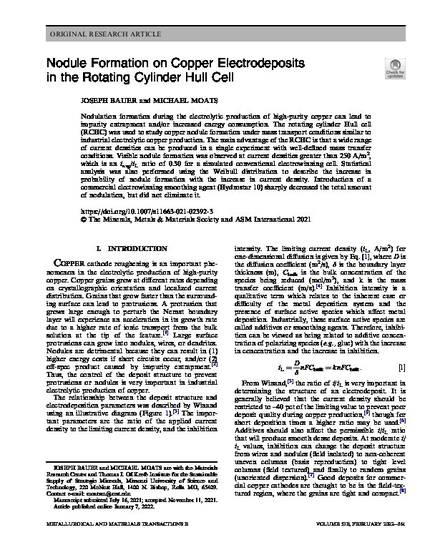
Nodulation formation during the electrolytic production of high-purity copper can lead to impurity entrapment and/or increased energy consumption. The rotating cylinder Hull cell (RCHC) was used to study copper nodule formation under mass transport conditions similar to industrial electrolytic copper production. The main advantage of the RCHC is that a wide range of current densities can be produced in a single experiment with well-defined mass transfer conditions. Visible nodule formation was observed at current densities greater than 250 A/m2, which is an iavg/iL ratio of 0.30 for a simulated conventional electrowinning cell. Statistical analysis was also performed using the Weibull distribution to describe the increase in probability of nodule formation with the increase in current density. Introduction of a commercial electrowinning smoothing agent (Hydrostar 10) sharply decreased the total amount of nodulation, but did not eliminate it.
Available at: http://works.bepress.com/michael-moats/83/
